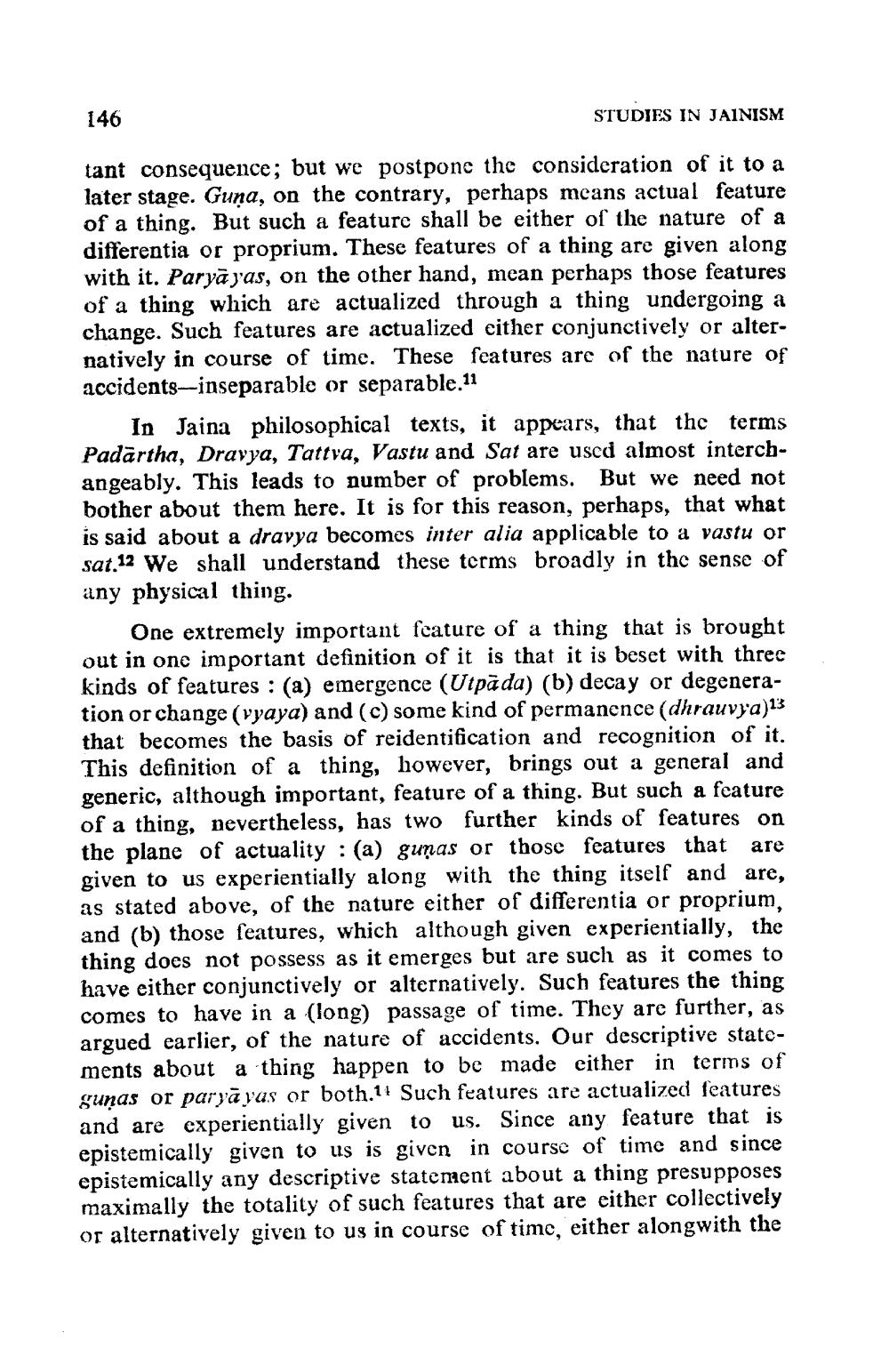________________
146
STUDIES IN JAINISM
tant consequence; but we postpone the consideration of it to a later stage. Guna, on the contrary, perhaps mcans actual feature of a thing. But such a feature shall be either of the nature of a differentia or proprium. These features of a thing are given along with it. Paryā yas, on the other hand, mean perhaps those features of a thing which are actualized through a thing undergoing a change. Such features are actualized either conjunctively or alternatively in course of time. These features are of the nature of accidents--inseparable or separable.11
In Jaina philosophical texts, it appears, that the terms Padārtha, Dravya, Tattva, Vastu and Sat are used almost interchangeably. This leads to number of problems. But we need not bother about them here. It is for this reason, perhaps, that what is said about a dravya becomes inter alia applicable to a vastu or sat.12 We shall understand these terms broadly in the sense of any physical thing.
One extremely important feature of a thing that is brought out in one important definition of it is that it is beset with three kinds of features : (a) emergence (Utpada) (b) decay or degeneration or change (vyaya) and (c) some kind of permanence (dhrauvya)13 that becomes the basis of reidentification and recognition of it. This definition of a thing, however, brings out a general and generic, although important, feature of a thing. But such a feature of a thing, nevertheless, has two further kinds of features on the plane of actuality : (a) guņas or those features that are given to us experientially along with the thing itself and are, as stated above, of the nature either of differentia or proprium, and (b) those features, which although given experientially, the thing does not possess as it emerges but are such as it comes to have either conjunctively or alternatively. Such features the thing comes to have in a (long) passage of time. They are further, as argued earlier, of the nature of accidents. Our descriptive statements about a thing happen to be made either in terms of gunas or parya yas or both.1! Such features are actualized features and are experientially given to us. Since any feature that is epistemically given to us is given in course of time and since epistemically any descriptive statement about a thing presupposes maximally the totality of such features that are either collectively or alternatively given to us in course of time, either alongwith the




